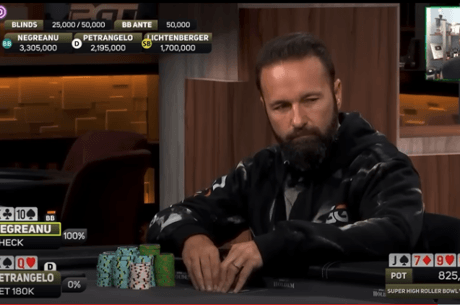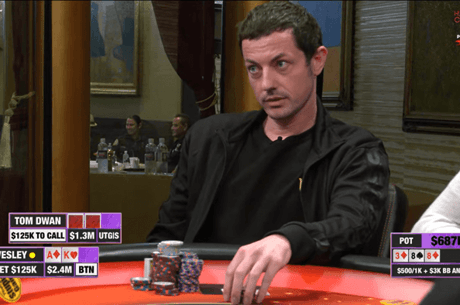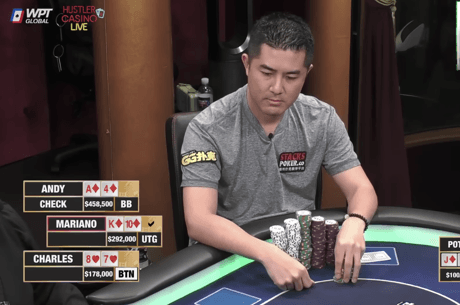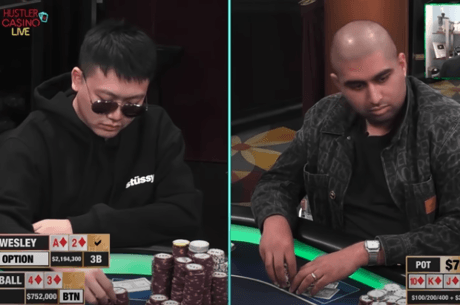What Did I Do Facing a 3x-Pot River Bet in a $25/$50 NLH Cash Game?

In a tough $25/$50 no-limit hold’em cash game, I had a solid middle pair but faced a 3x-pot river bet for $2,700. What was the play? That’s the subject of this week’s strategy article here on PokerNews.
The hand took place a while back before COVID at Borgata, which actually reopened their poker room just recently. The opponent I’m up against in this hand is a good, strong professional player, well respected, and he likes to battle. He raised to $150 from the cutoff out of our effective $10,000 stacks.
I looked down at the A♠J♠ on the button, and because the two players in the blinds were the sort of players I definitely wanted to keep in the hand, I opted to just call. Unfortunately, both those players folded and it was heads-up to the flop, which came down Q♠J♦3♣.
My opponent continued for $300, and I think this is a very easy call with middle pair and a backdoor spade draw. If you study at all at my training site, , you will know that when you have a very clear marginal made hand, one that if you raise and your opponent continues you’re not especially happy, but you’re in fine shape against all your opponent’s garbage, you usually just want to call.
A lot of people think that the goal is always to extract maximum value, which may be true against weak players, but against a world-class player like this, it’s sometimes about pot control.
The turn was the 2♣ and our opponent checked. I think we can go either way between checking or value betting, but usually, you want to be pretty cautious about building a pot with a marginal hand, especially when the stacks are deep.
A lot of people think that the goal is always to extract maximum value, which may be true against weak players, but against a world-class player like this, it’s sometimes about pot control.
I did check and the 6♥ completed the board on the river. Now, if my opponent makes a normal bet like $600, or even $1,000, we have an easy call, but here he bets $2,700, which was three times the pot and certainly not what we expected. However, it is what you’ll often get out of good, strong, battling loose-aggressive players, who often bluff way too much using a big size.
When they know you have a marginal hand, they like to try to blow you off your entire range with an overbet. If I’m folding top pair or worse, there are a load of hands that will fold to this big bet, so in order to stay protected you can’t fold the top pair, or worse, you actually have to extend lower and lower.
So, against a player like this, it’s an easy call. Am I good here 45 percent of the time? Yes, I’m probably good 60 percent of the time or more against a player like this. Again, against tighter players at smaller stakes, this might not be the case.
I called and won the pot after my opponent showed the 10♠8♠ for a missed gutshot. He elected not to bluff the turn and instead go for the big bluff on the river. If you want to move up, you need to learn to defend appropriately. If your opponent doesn’t have a bluff range in this scenario, what should you do with your jack? Easy fold. Poker is easy when you know exactly what your opponents are doing.
For a more thorough breakdown of this hand, check out my thoughts in the following video:
Jonathan Little is a professional poker player and author with over $7,000,000 in live tournament earnings. He writes a weekly educational blog and hosts a podcast at . Sign up to learn poker from Jonathan for free at . You can follow him on Twitter .









